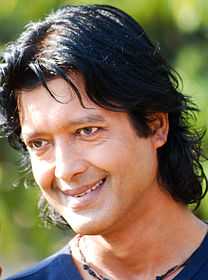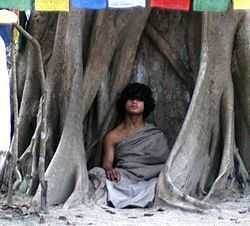People of Nepal
| |||||||||||||||||||||
| Total population | |||||||||||||||||||||
|---|---|---|---|---|---|---|---|---|---|---|---|---|---|---|---|---|---|---|---|---|---|
| 30.14 million | |||||||||||||||||||||
| Regions with significant populations | |||||||||||||||||||||
| 30,494,504 | |||||||||||||||||||||
| 12,100,000 | |||||||||||||||||||||
| 1,400,000 | |||||||||||||||||||||
| 1,300,000 | |||||||||||||||||||||
| 500,000 | |||||||||||||||||||||
| 350,490 | |||||||||||||||||||||
| 350,000 | |||||||||||||||||||||
| 31,000 | |||||||||||||||||||||
| 240,000 | |||||||||||||||||||||
| 70,000 | |||||||||||||||||||||
| 50,000 | |||||||||||||||||||||
| 40,000 | |||||||||||||||||||||
| 40,950 | |||||||||||||||||||||
| 10,000 | |||||||||||||||||||||
| 100,000 | |||||||||||||||||||||
| 39,780 | |||||||||||||||||||||
| 1,000[1] | |||||||||||||||||||||
| Languages | |||||||||||||||||||||
| Nepali language, English | |||||||||||||||||||||
| Religion | |||||||||||||||||||||
| Predominantly Hinduism and significantly Buddhism | |||||||||||||||||||||
The population of Nepal is estimated to be 30,494,504 people based on the 2014 census, with a population growth rate of 1.596% and a median age of 21.6 years. Female median age is estimated to be 22.5 years, and male median age to be 20.7 years. Only 4.4% of the population is estimated to be more than 65 years old, comprising 681,252 females and 597,628 males. Sixty one per cent of the population is between 15 and 64 years old, and 34.6% is younger than 14 years. Birth rate is estimated to be 22.17 births/1,000 population with an infant mortality rate of 44.54 deaths per 1,000 live births. Life expectancy at birth is estimated to be 67.44 years for females and 64.94 years for males. Death rate is estimated to be 681 deaths per 100,000 people. Net migration rate is estimated to be 61 migrants per 100,000 people. According to the 2001 census, only 48.6% of the total population is literate, of which 62.7% are male and 34.9% are female.[2]
Demographic history
Nepali or Nepalese or Gurkha or Gorkhali are descendants of migrants from parts of Kashmir, earlier Greater Nepal, Tibet, India, and parts of Burma and Yunnan, along with native tribal populations.
Khas and East Asian looking(Mongoloid) people comprise the Nepali-origin people in the hills. The mountainous region is sparsely populated above 3,000 m (9,800 ft), but in central and western Nepal ethnic Sherpa and Lama people inhabit even higher semi-arid valleys north of the Himalaya. Kathmandu Valley, in the middle hill region, constitutes a small fraction of the nation's area but is the most densely populated, with almost 5 percent of the nation's population. Nepalese society is multilingual, multireligious and multiethnic.
The Khas (Brahmin, Chhetri), Mongoloids people are people of Nepali origin living in the mountains,hills and valleys of Nepal. The Maithali people such as King Janak and Goddess Sita of the Mithila region of Eastern Terai-Madhesh are the native Madhesi people of Nepalese origin. The Tharus of the Western Terai-Madhesh are considered indigenous to the Western Terai region.
Population growth
.jpg)
.jpg)
Vital statistics
UN estimates
| Period | Live births per year | Deaths per year | Natural change per year | CBR1 | CDR1 | NC1 | TFR1 | IMR1 |
|---|---|---|---|---|---|---|---|---|
| 1975–1980 | 597 000 | 254 000 | 343 000 | 42.0 | 17.9 | 24.1 | 5.92 | 139.2 |
| 1980–1985 | 651 000 | 253 000 | 398 000 | 40.7 | 15.8 | 24.9 | 5.72 | 122.9 |
| 1985–1990 | 707 000 | 249 000 | 458 000 | 39.3 | 13.8 | 25.5 | 5.39 | 106.8 |
| 1990–1995 | 767 000 | 244 000 | 523 000 | 37.7 | 12.0 | 25.7 | 4.96 | 91.5 |
| 1995–2000 | 805 000 | 224 000 | 581 000 | 35.0 | 9.7 | 25.3 | 4.41 | 72.3 |
| 2000–2005 | 797 000 | 201 000 | 596 000 | 30.9 | 7.8 | 23.1 | 3.74 | 54.9 |
| 2005–2010 | 732 000 | 177 000 | 555 000 | 25.6 | 6.2 | 19.4 | 2.95 | 38.7 |
| 1 CBR = crude birth rate (per 1000); CDR = crude death rate (per 1000); NC = natural change (per 1000); TFR = total fertility rate (number of children per woman); IMR = infant mortality rate per 1000 births | ||||||||
Source:[3]
Ethnic groups
.jpg)
Nepal's 2001 census enumerated 102 castes and ethnic groups.[4]
There are three main racial types: Aryan, Mongoloid and mixed. Aryan: Bahun, Chhetri, Damai, Kami etc. Mongoloid consists of Tamang, Gurung, Magar, Sherpa, Thakali and Kirat (e.g., Rai, Limbu, Sunuwar) and mixed solely consists of Newar people. Aryan-Khas origin represents 40% of the population. Various groups of Mongoloid and mixed Mongoloid-Aryan ethnicity make up roughly 50%, including Newar (5.5 percent). The two largest demographic groups are Nepali-speaking hill Chhetri (15.8 to 18 percent) and Nepali-speaking hill Brahmin (12.7 percent). In terms of caste, those figures don't include additional Brahmin and Chhetri (Kshatriya) within the large madeshi group; madeshi of various castes may account for roughly 32 percent of Nepal's demographics. [5]
| Caste/ethnic group | Population | % of total |
|---|---|---|
| Chhetri (Kshatriya) | 3,593,496 | 15.8 |
| Brahmin | 2,896,477 | 12.7 |
| Magar | 1,622,421 | 7.1 |
| Tharu | 1,533,879 | 6.7 |
| Tamang | 1,282,304 | 5.6 |
| Newar | 1,245,232 | 5.5 |
| Muslim | 971,056 | 4.3 |
| Kami | 895,954 | 3.9 |
| Rai | 635,151 | 2.79 |
| Gurung | 686,000 | 2.39 |
| Damai/Dholi | 390,305 | 1.72 |
| Limbu | 359,379 | 1.58 |
| Thakuri | 334,120 | 1.47 |
| Sarki | 318,989 | 1.40 |
| Teli | 304,536 | 1.34 |
| Chamar, Harijan, Ram | 269,661 | 1.19 |
| Koiri | 251,274 | 1.11 |
| Kurmi | 1,629,208 | 7.18 |
| Gharti/Bhujel[6][7] | 117,568 | 0.52 |
| Mallah | 115,986 | 0.51 |
| Khas - Kalwar | 115,606 | 0.51 |
| Kumal | 99,389 | 0.44 |
| Hajam/Thakur | 98,169 | 0.43 |
| Kanu | 95,826 | 0.42 |
| Rajbansi | 95,812 | 0.42 |
| Sunuwar (Mukhiya) | 95,254 | 0.42 |
| Sudhi | 89,846 | 0.40 |
| Lohar | 82,637 | 0.36 |
| Tatma | 76,512 | 0.34 |
| Khatwe[8][9] | 74,972 | 0.33 |
| Madheshi Dhobi | 73,413 | 0.32 |
| Majhi[10][11] | 72,614 | 0.32 |
| Nuniya[12] | 66,873 | 0.29 |
| Kumhar | 54,413 | 0.24 |
| Danuwar | 53,229 | 0.23 |
| Chepang | 52,237 | 0.23 |
| Haluwai | 50,583 | 0.22 |
| Rajput | 48,454 | 0.21 |
| Kayastha | 46,071 | 0.20 |
| Badhai | 45,975 | 0.20 |
| Marwadi | 43,971 | 0.19 |
| Santhal/Satar | 42,698 | 0.19 |
| Dhagar/Jhagar[13] | 41,764 | 0.18 |
| Bantar[14] | 35,839 | 0.16 |
| Barai | 35,434 | 0.16 |
| Kahar | 34,531 | 0.15 |
| Gangai[15] | 31,318 | 0.14 |
| Lodha | 24,738 | 0.11 |
| Rajbhar | 24,263 | 0.11 |
| Thami | 22,999 | 0.10 |
| Dhimal | 19,537 | 0.09 |
| Bhote | 19,261 | 0.08 |
| Binga/Binda | 18,720 | 0.08 |
| Bhediyar Gaderi | 17,729 | 0.08 |
| Nurang | 17,522 | 0.08 |
| Yakkha | 17,003 | 0.07 |
| Darai[16][17] | 14,859 | 0.07 |
| Tajpuriya[18] | 13,250 | 0.06 |
| Thakali | 12,973 | 0.06 |
| Chidimar | 12,296 | 0.05 |
| Non-Khas Pahari peoples | 11,505 | 0.05 |
| Khas - Mali | 11,390 | 0.05 |
| Bangali | 9,860 | 0.04 |
| Chhantyal | 9,814 | 0.04 |
| Dom | 8,931 | 0.04 |
| Kamar | 8,761 | 0.04 |
| Bote[19][20] | 7,969 | 0.04 |
| Brahmu/Baramu[21][22] | 7,383 | 0.03 |
| Gaine/Gandarbha | 5,887 | 0.03 |
| Jirel | 5,316 | 0.02 |
| Adivasi/Janajati | 5,259 | 0.02 |
| Dura | 5,169 | 0.02 |
| Churaute[23][24] | 4,893 | 0.02 |
| Badi | 4,442 | 0.02 |
| Meche[25][26] | 3,763 | 0.02 |
| Lepcha | 3,660 | 0.02 |
| Halkhor | 3,621 | 0.02 |
| Punjabi/Sikh | 3,054 | 0.01 |
| Kisan | 2,876 | 0.01 |
| Raji | 2,399 | 0.01 |
| Byansi[27][28] | 2,103 | 0.01 |
| Hayu | 1,821 | 0.01 |
| Koche | 1,429 | 0.01 |
| Dhunia | 1,231 | 0.01 |
| Walung | 1,148 | 0.01 |
| Jain | 1,015 | 0.00 |
| Munda | 660 | 0.00 |
| Raute | 658 | 0.00 |
| Hyolmo[29][30] | 579 | 0.00 |
| Madheshi Pattharkatta/Kuswariya[31][32] | 552 | 0.00 |
| Kusunda | 164 | 0.00 |
| Unspecified Dalit | 173,401 | 0.76 |
| Caste/Ethnicity not stated | 231,641 | 1.02 |
| Total | 22,736,934 | 100.00 |
Demographic statistics
Nepal Demographic and Health Survey
Total Fertility Rate (TFR) and Crude Birth Rate (CBR):[33]
| Year | CBR (Total) | TFR (Total) | CBR (Urban) | TFR (Urban) | CBR (Rural) | TFR (Rural) |
|---|---|---|---|---|---|---|
| 1996 | 37 | 4.64 | 27 | 2.85 | 38 | 4.83 |
| 2001 | 33.5 | 4.1 | 20.6 | 2.1 | 34.9 | 4.4 |
| 2006 | 28.4 | 3.1 | 21.9 | 2.1 | 29.5 | 3.3 |
| 2011 | 24.3 | 2.6 | 16.6 | 1.6 | 25.5 | 2.8 |
The following demographic statistics are from the 2011 Nepal Demographic and Health Survey (NDHS).[34]
Median birth intervals (Median number of months since preceding birth)
- Total: 36.2
- Rural: 35.9
- Urban: 40.3 (2011)
Median age at first birth
- Median age: 20.1 (2011)
Fertility rate - past trend and present
- Total fertility rate: 4.6 children born/woman (1996)
- Total fertility rate: 4.1 children born/woman (2001)
- Total fertility rate: 3.1 children born/woman (2006)
- Total fertiltiy rate: 2.6 children born/woman
- Rural fertility rate: 2.8 children born/woman
- Urban fertility rate: 1.6 children born/woman (2011)
Ideal family size - Mean ideal number of children
- Overall (female/male): 2.1 / 2.3
- Currently married (female/male): 2.2 / 2.3
- Urban (female/male): 1.9 / 2.0
- Rural (female/male): 2.2 / 2.3 (2011)
Ideal family size by gender and age group
- Below is a table of the ideal family size by gender and age for 2011.
| Age | Women | Men |
|---|---|---|
| 15-19 | 1.9 | 2.2 |
| 20-24 | 1.9 | 2.1 |
| 25-29 | 2.1 | 2.1 |
| 30-34 | 2.2 | 2.3 |
| 35-39 | 2.3 | 2.4 |
| 40-44 | 2.5 | 2.4 |
| 45-49 | 2.6 | 2.6 |
CIA World Factbook
The following demographic statistics are from the CIA World Factbook, unless otherwise indicated.
Nationality
- noun: Nepali, Nepalese, Gorkhali (singular and plural)
- adjective: Nepali, Nepalese, Gorkhali
Religions
- Hindu 80.6%, Buddhist 10.7%, Muslim 4.2%, Kirant 3.6%, other 0.9% (2001 census). Many peoples in Nepal follows both Hinduism and Buddhism together and often called as Buddhinduism.
Literacy
- definition: age 15 and over can read and write
- total population: 48.6%
- male: 62.7%
- female: 34.9% (2001 census)
Population
- 29,890,686 (July 2012 est.)
Age structure
- 0-14 years: 34.6% (male 5,177,264/female 4,983,864)
- 15-64 years: 61.1% (male 8,607,338/female 9,344,537)
- 65 years and over: 4.4% (male 597,628/female 681,252) (2011 est.)
Median age
- total: 21.6 years
- male: 20.7 years
- female: 22.5 years (2011 est.)
Population growth rate
- 1.768% (2012 est.)
Birth rate
- 21.85 births/1,000 population (2012 est.)
Death rate
- 6.75 deaths/1,000 population (July 2012 est.)
Net migration rate
- 2.58 migrant(s)/1,000 population (2012 est.)
Total fertility rate
- 2.41 children born/woman (2012 est.)
Urbanization
- urban population: 19% of total population (2010)
- rate of urbanization: 4.7% annual rate of change (2010-15 est.)
Sex ratio
- at birth: 1.04 male(s)/female
- under 15 years: 1.04 male(s)/female
- 15-64 years: 0.93 male(s)/female
- 65 years and over: 0.87 male(s)/female
- total population: 0.96 male(s)/female (2012 est.)
Life expectancy at birth
- total population: 66.51 years
- male: 65.26 years
- female: 67.82 years (2012 est.)
Languages
Nepal's diverse linguistic heritage evolved from four major language groups: Indo-Aryan, Tibeto-Burman, Mongolian, and various indigenous language isolates. According to the 2001 national census, 92 different living languages are spoken in Nepal (a 93rd category was "unidentified"). The major languages of Nepal as of 2011 census.[35] (percent spoken as mother tongue language) includes
- Nepali (80.6%), (National)
- Tharu (5.8%)
- Tamang (5.1%)
- Nepal Bhasa (3.2%)
- Magar (3.0%)
- Doteli (3.0%)
- Bantawa (0.5%)
All the dialects of Nepali are not mutually intelligible. Wide regional variations exist. The dialect of Far Western Region is more similar to Kumaon than Nepali.
Nepali (derived from Khas bhasa) is considered to be a member of Indo-European language and is written in Devanagari script. Nepali was the language of the house of Gorkhas in the late 18th century and became the official, national language that serves as the lingua franca among Nepalese of different ethnolinguistic groups. Maithili—along with regional dialects Awadhi and Bhojpuri—are originated in Terai of Nepal and spoken in the southern Terai Region. Many Nepali in government and business uses English as an official language. English is the language of technical, medical and scientific community as well as the elite bankers, traders and entrepreneurs. There has been a surge in the number and percentage of people who understand English. Majority of the urban and a significant number of the rural schools are English-medium schools. Higher education in technical, medical, scientific and engineering fields are entirely in English.
Other languages, particularly in the Inner Terai, hill and mountain regions are remnants of the country's pre-unification history of dozens of political entities isolated by mountains and gorges. These languages typically are limited to an area spanning about one day's walk. Beyond that distance dialects and languages lose mutual intelligibility.
Religion
As of the 2011 census, 80.62% of the Nepalese population was Hindu, 10.74% Buddhist, 4.2% Muslim, 3.6% Kirant/Yumaist, 0.45% Christian, and 0.4% followed other religions or no religion.[36]
Religion is important in Nepal; the Kathmandu Valley alone has more than 2,700 religious shrines. The dissolved constitution of Nepal described the country as a "Hindu kingdom", although it did not establish Hinduism as the state religion. Nepal's constitution continues long-standing legal provisions prohibiting discrimination against other religions (but also proselytization). The king was deified as the earthly manifestation of the Hindu god Vishnu. Then on May 19, 2006, the government facing a constitutional crisis, the House of Representatives which had been just reformed, having been previously dissolved, declared Nepal a "secular state".
The 2001 census identified 80.6% of the population as Hindu and 10.7% as Buddhist (although many people labeled Hindu or Buddhist often practice a synthetic blend of Hinduism, Buddhism, or animist traditions). 4.2% of the population is Muslim and 3.6% of the population follows the indigenous Kirant Mundhum religion. Christianity is practiced by less than 0.5% of the population.[37]
Buddhist and Hindu shrines and festivals are respected and celebrated by most Nepalese. Certain animist practices of old indigenous religions survive.
Ethnic and regional equity
Pahari Hill Hindus of the Khas Gorkha tribe (Bahun and Chhetri castes) and the Newar ethnicity dominated the civil service, the judiciary and upper ranks of the army throughout the Shah regime (1768–2008). Nepali was the national language and Sanskrit became a required school subject. Children who spoke Nepali natively and who were exposed to Sanskrit had much better chances of passing the national examinations at the end of high school, which meant they had better employment prospects and could continue into higher education. Children who natively spoke local languages of the Terai and Hills, or Tibetan dialects prevailing in the high mountains were at a considerable disadvantage. This history of exclusion coupled with poor prospects for improvement created grievances that encouraged many in ethnic communities such as Madhesi and its subgroup Tharu in the Terai and Kham Magar in the mid-western hills to support the Unified Communist Party of Nepal (Maoist) and various other armed Maoist opposition groups such as the JTMM during and after the Nepalese Civil War. The negotiated end to this war forced King Gyanendra to abdicate in 2008. Issues of ethnic and regional equity have tended to dominate the agenda of the new republican government and continue to be divisive.[38][39][40][41][42]
Nepalese in the U.K.
According to latest figure from Office for National Statistics estimates that 35,000 Nepal-born people are currently resident in the UK .[43]
Nepalese in Hong Kong
Nepali people in Hong Kong are mainly the children of ex-Gurkhas born in Hong Kong during their parents' service with the British Army's Brigade of Gurkhas, which was based in Hong Kong from the 1970s until the handover. Large groups can be found in Shek Kong, Yuen Long District, of the main bases of the British army. Many ex-Gurkhas remained in Hong Kong after the end of their service under the sponsorship of their Hong Kong-born children, who held right of abode.
Nepalese of middle age or older generations in Hong Kong are predominantly found in security, while those of younger generations are predominantly found in the business industry.
Nepalese overseas
Nepalese migrants abroad have suffered tremendous hardships, including some 7,500 deaths in the Middle East and Malaysia alone since the year 2000, some 3,500 in Saudi Arabia.[44]
| Country | Articles | Population |
|---|---|---|
| India | Nepalese Indian | 12,100,000 |
| Burma | Burmese Gurkha | 1,400,000 |
| Saudi Arabia | Nepalese in Saudi Arabia | 250,000 |
| Malaysia | Nepalese people in Malaysia | 1,700,000 |
| United States | Nepalese American | 300,490 |
| Bhutan | Lhotshampa | 50,000 |
| Qatar | Nepalis in Qatar | 400,000[45] |
| Japan | 100,000 | |
| United Arab Emirates | Nepalese in the United Arab Emirates | 150,000 |
| United Kingdom[43] | Nepalis in the United Kingdom | 50,000 |
| Iraq[46] | 30,000 | |
| China | Nepalis in China | 21,000 |
| Continental Europe | 20,000 | |
| Hong Kong | Nepalis in Hong Kong | 16,000 |
| Australia | Nepalese Australian | 100,000 |
| South Korea | Nepalis in South Korea | 100,000 |
| Canada | Nepalese Canadian | 6,000 |
| Total Overseas Nepal Population | ~15,643,000 | |
Foreign population in Nepal
As per census of 2001 there are 116,571 foreign born citizens in Nepal out of which 90% are Indian origin[47] followed by Bhutan, Pakistan and China. This number does not include the refugees from Bhutan and Tibet.

References
- ↑ International Nepal Fellowship - Nepali diaspora
- ↑ CIA (2011) The World Factbook : Nepal.
- ↑ World Population Prospects: The 2010 Revision
- ↑ Government of Nepal. Central Bureau of Statistics. Statistical Year Book of Nepal, 2009 (PDF). Kathmandu.
- ↑ http://demrepubnepal.blogspot.com/2006/08/dr-ram-prakash-yadav-facts-and-figures.html
- ↑ "Nationalities of Nepal, #36: Bhujels/Ghartis". Friedrich-Ebert-Stifting (FES). Retrieved 2011-04-06.
- ↑ Lewis, M. Paul (2009). "Bhujel, a language of Nepal". Ethnologue: Languages of the World. Dallas: SIL International. Retrieved 2011-04-06.
- ↑ Anon. (April 2006), Social Inclusion: What really achieved? (PDF), Kishore, Nepal: Centre for Professional Journalism Studies, Nepal
- ↑ Jha, Shrawan Kumar (1997), "The Khatbe of North Bihar, an Anthropological Perspective", Scheduled Castes Today (Makhan Jha, ed.), New Delhi: M D Publications, pp. 161 ff.
- ↑ "#40: Majhis". FES, op. cit.
- ↑ Lewis, op. cit. "Majhi, a language of Nepal". Missing or empty
|title=(help) - ↑ "Call to uplift ethnic Nunia community". The Rising Nepal (Kathmandu: Gorkhapatra). June 13. Retrieved April 8, 2011. Check date values in:
|date=(help) - ↑ "#12: Jhangads". FES, op. cit.
- ↑ "Bantar Community in Nepal". BlogSpot: Mahesh Paudyal Prarambha. Retrieved 2011-04-07.
- ↑ "#5: Gangais". FES, op. cit.
- ↑ Lewis, op. cit. "Darai, a language of Nepal". Missing or empty
|title=(help) - ↑ "#24: Darais". FES, op. cit.
- ↑ "#16: Tajpurias". FES, op. cit.
- ↑ "#34: Botes". FES, op. cit.
- ↑ Lewis, op. cit. "Bote-Majhi, a language of Nepal". Missing or empty
|title=(help) - ↑ "#32: Baramos". FES, op. cit.
- ↑ Lewis, op. cit. "Baraamu, a language of Nepal". Missing or empty
|title=(help) - ↑ Sharma, Sudhindra. "How the crescent fares in Nepal". Himal, May 1995. Retrieved April 7, 2011.
- ↑ Siddique, Muhammad (2001). "Muslim Population in Nepal: Some Outstanding Features" (PDF). Journal of Muslim Minority Affairs 21 (2). Retrieved April 7, 2011.
- ↑ "#43: Meches". FES, op. cit.
- ↑ Lewis, op. cit. "Bodo, a language of India". Missing or empty
|title=(help) - ↑ "#35: Byasis". FES, op. cit.
- ↑ Lewis, op. cit. "Byansi, a language of India". Missing or empty
|title=(help) - ↑ "#61: Hyolmos". FES, op. cit.
- ↑ Lewis, op. cit. "Helabu Sherpa, a language of Nepal". Missing or empty
|title=(help) - ↑ "#3: Kushbadias". FES, op. cit.
- ↑ National Coalition Against Racism. "Janajati: Kushbadia". Retrieved April 8, 2011.
- ↑ http://microdata.worldbank.org/index.php/catalog/dhs#_r=&collection=&country=&dtype=&from=1890&page=11&ps=&sk=&sort_by=nation&sort_order=&to=2014&topic=&view=s&vk=
- ↑ "Nepal Demographic and Health Survey 2011." (PDF). Retrieved 2011-05-07.
- ↑ Official Summary of Census (2011), Central Bureau of Statistics, Nepal
- ↑ 2011 Nepal Census Report, p. 16
- ↑ http://www.cbs.gov.np/Nepal%20in%20figure/nepal%20in%20figures%202006.pdf
- ↑ "OCHA Nepal – Situation Overview" (PDF). Issue 12. OCHA. April 2007. Retrieved 2011-05-07.
- ↑ "OCHA Nepal – Situation Overview" (PDF). Issue 16. OCHA. July–August 2007. Retrieved 2011-05-07.
- ↑ "OCHA Nepal – Situation Overview" (PDF). Issue 30. OCHA. June–July 2008. Retrieved 2011-05-07.
- ↑ Sharma, Hari (2010-11-18). "Body of murder victim found in Gulmi". Gulmi: The Himalayan Times online. Retrieved 2011-05-07.
- ↑ Hatlebakk, Magnus (2007). "Economic and social structures that may explain the recent conflicts in the Terai of Nepal" (PDF). Kathmandu: Norwegian Embassy. Retrieved 2011-05-08.
- ↑ 43.0 43.1 "Population by Country of birth and nationality Jan10-Dec10". Office for National Statistics. September 2011. Retrieved 17 September 2010.
- ↑ http://www.ekantipur.com/2014/01/07/top-story/natural-deaths-raise-doubts/383506.html
- ↑ http://www.bqdoha.com/2013/12/population-qatar
- ↑ Nepal government lifts Iraq working ban
- ↑ Subedi, Bhim Prasad (2007). "The Issue of Foreign Born Population in Nepal: A Short Essay in Honor of Dr. Harka Gurung". The Himalayan Review 38: 23–34.
![]() This article incorporates public domain material from the CIA World Factbook document "2003 edition".
This article incorporates public domain material from the CIA World Factbook document "2003 edition".
External links
| ||||||||||||||||||||||||||||||||||
| ||||||||||||||
| ||||||||||||||
.jpg)

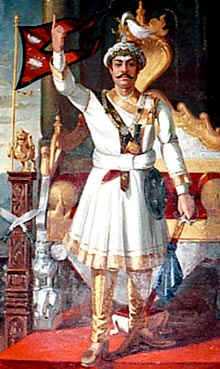
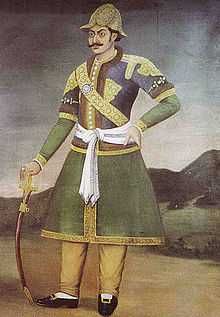




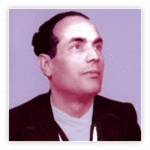
.jpg)




